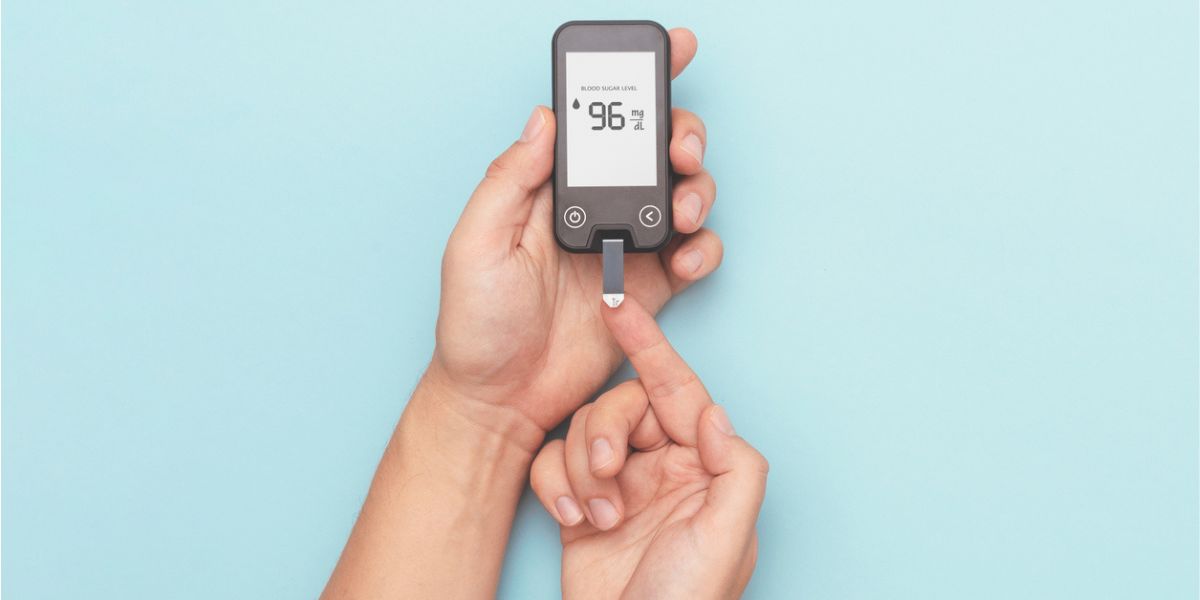Only 60% of people with diabetes are even aware they have it, leaving four in ten untreated and at risk.
Published Aug 25, 2025 | 7:00 AM ⚊ Updated Aug 25, 2025 | 7:00 AM

Diabetes. Representative Image. (iStock)
Synopsis: Millions of Indians live with diabetes, many unaware until complications strike. Even among the diagnosed, care is incomplete, focused on sugar while neglecting heart and vascular health. The map of diabetes mirrors economic growth, with southern and richer regions worst hit, yet progress in care remains uneven, with major gaps in diagnosis, treatment, and long-term control.
In homes and workplaces across India, a silent crisis is reshaping everyday lives. Diabetes, once thought of as an old-age ailment, is no longer waiting for the twilight years; it is showing up in people’s forties and fifties, cutting into their productive years of life.
The shift is stark in cities, where crowded commutes, desk-bound jobs, and easy access to processed food are fuelling a health emergency.
The troubling paradox is that the educated and affluent, those expected to have better healthcare access, now carry the heaviest burden. Weight gain, changing diets, and urban lifestyles have turned privilege and prosperity into hidden costs.
Millions of Indians live with diabetes, many unaware until complications strike. Even among the diagnosed, care is incomplete, focused on sugar while neglecting heart and vascular health. The map of diabetes mirrors economic growth, with southern and richer regions worst hit, yet progress in care remains uneven, with major gaps in diagnosis, treatment, and long-term control.
A nationally representative survey, the Longitudinal Aging Study in India (LASI), conducted by researchers led by TV Sekher, titled “Prevalence, awareness, treatment, and control of diabetes in India: a nationally representative survey of adults aged 45 years and older”, published in The Lancet Global Health, offers one of the most detailed pictures yet of how diabetes is spreading and being managed across the country.
The LASI, which surveyed nearly 58,000 adults aged 45 and above, estimates that 19.8% of this age group lives with diabetes, that’s 50 million people. Of them, 20 million don’t even know they have it, an invisible burden that grows until complications strike.
The disease cuts across gender almost evenly, 19.6% among men and 20.1% among women. But where people live matters: urban prevalence is 30%, double the 15% seen in rural India. Lifestyle shifts in cities, with sedentary jobs and easy access to processed food, appear to be fuelling the surge.
Age, too, plays a role, but the results challenge the idea that diabetes is only for the elderly. Prevalence rises steadily with age, peaking around 23–24% in the early 70s, but it is already 15–20% in the late forties and fifties, years when people are at their economic and family peak.
Weight and body size are central drivers. Among those with a healthy BMI, the prevalence is only 13.5%. But in the overweight group, it rises to 24.7%, and among the obese, it climbs to a startling 34.6%. This makes obesity the single strongest risk factor in the Indian context.
Perhaps most striking is the paradox of privilege. Higher education and higher economic status are linked with a greater risk. The most educated adults show prevalence rates close to 30%, compared with 15% among those with no schooling. Households in the top economic tier also face far higher prevalence than poorer families.
At a state level, the map of diabetes looks very much like the map of development. Southern and prosperous states carry the heaviest burden, while central and northeastern states are relatively less affected. Kerala, Chandigarh, and Puducherry top the chart at around 36%, while states like Tamil Nadu, Maharashtra, and Uttar Pradesh have the largest absolute number of cases, millions each.
If the scale of the disease is daunting, the state of care is even more sobering. Only 60% of people with diabetes are even aware they have it, leaving four in ten untreated and at risk.
Among those who are diagnosed, treatment is patchy and incomplete. Just under half, 46%, manage to keep their blood sugar under control, and a little more than half, 59%, succeed in controlling their blood pressure.
But when it comes to heart health, the picture is bleak: only 6% of patients are on cholesterol-lowering medicines such as statins, even though cardiovascular complications are the leading cause of death in diabetics.
The study shows that the focus of care is too narrow. Doctors and patients tend to fixate on blood sugar, while the broader package of care, protecting the heart, kidneys, and eyes, is neglected. This leaves patients vulnerable to stroke, heart attack, and disability even when their glucose levels are under control.
Geography plays a role too. Richer states record higher awareness, but when it comes to actual control, the advantage fades. Wealth boosts diagnosis, but not necessarily better long-term management. Progress across the country has been uneven and incomplete: compared to earlier studies, India has improved slightly in sugar and blood pressure control, but remains far off global targets.
The WHO’s Global Diabetes Compact has set ambitious 2030 goals: 80% of patients diagnosed, 80% with sugar under control, 80% with blood pressure controlled, and 60% on statins. India falls far short. Only one state, Arunachal Pradesh, manages to meet even a single target, and that is only for blood sugar control.
The implications are stark. Diabetes is no longer just an old-age condition; it is striking people in their most productive years, shortening life expectancy and reducing economic output. With India’s population aging, the total number of diabetics will only rise unless prevention, early detection, and comprehensive care are scaled up urgently.
(Edited by Majnu Babu).
